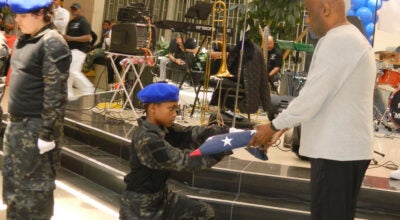Ester Marsh: Exercise can help after hip replacement surgery
Published 12:00 am Monday, January 14, 2019
Many of you know that my mom, before she died from melanoma in her lungs, had both hips replaced. She did amazing after the first one, then the other hip was replaced and, again, she did great.
Fortunately, my own hip issue is soft tissue-related.
However, my older brother will have a hip replacement in about one week. He was an athlete himself and a top coach in field hockey. He even went to three Olympics Games where the Netherlands won gold in the women’s competition and silver and bronze in the men’s.
He has been walking “like a duck” for a while now. An X-ray showed his hip is completely worn down, and a hip replacement is the next step.
I am confident he will do great.
If you have been diagnosed with hip problems, exercise can really help you prepare, prolong or even prevent surgery.
Sometimes, hip replacement surgery is the only way to recover from an injury, overuse or degeneration, as was the case with my mom and now my brother. I advise you to communicate with your doctor; he can tell you what you can and what you can’t do.
Once again, I never heard a doctor say “don’t exercise.” If you have surgery for a hip replacement, understand that physical therapy is a very important part of your recovery.
Strength and flexibility exercises will be taught, and many of them need to be done at home on a daily basis.
If you don’t do the exercises they give you to do every day, the surgery will not be the success it can be. Not doing your exercises can have impact on the scar tissue that will limit your movements if not properly exercised.
Early postoperative exercises after hip surgery/replacement include:
• Ankle pumps: Slowly push your foot up and down. Do this as often as every five or 10 minutes.
• Ankle rotations: Move your ankle inward toward your other foot and then outward away from your other foot. Do this five times in each direction three or four times a day.
• Bed-supported knee bends: Slide your heel to your buttocks, bending your knee and keeping your heel on the bed. Do not let your knee roll inward. Do this 10 times, three or four times a day.
• Buttocks contractions: Tighten the butt muscles and hold for a count of five seconds.
• Abduction exercise: Slide your leg out to the side as far as you can and slide it back.
• Quadriceps: Tighten your thigh muscle. Try to straighten your knee. Hold for five to 10 seconds.
• Straight leg raises: Tighten your thigh muscle with your knee fully straightened on the bed. As your thigh muscle tightens, lift your leg several inches of the bed. Hold for five to 10 seconds. Slowly lower.
Exercises such a bicycle riding, climbing stairs, dancing, golf, hiking, swimming and walking are also beneficial for a healthy hip and body. High-impact sports, such as running and heavy lifting, would not be recommended with hip problems or after hip surgery, at least not for a while. Make sure to check with your doctor and physical therapist if you are ready for those kind of exercises and sports.
So listen to your doctor, physical therapist and nurses.
I hope my brother will and do as well as my mom did after her hip replacement surgeries.
Ester H. Marsh is health and fitness director of J.F. Hurley Family YMCA.




